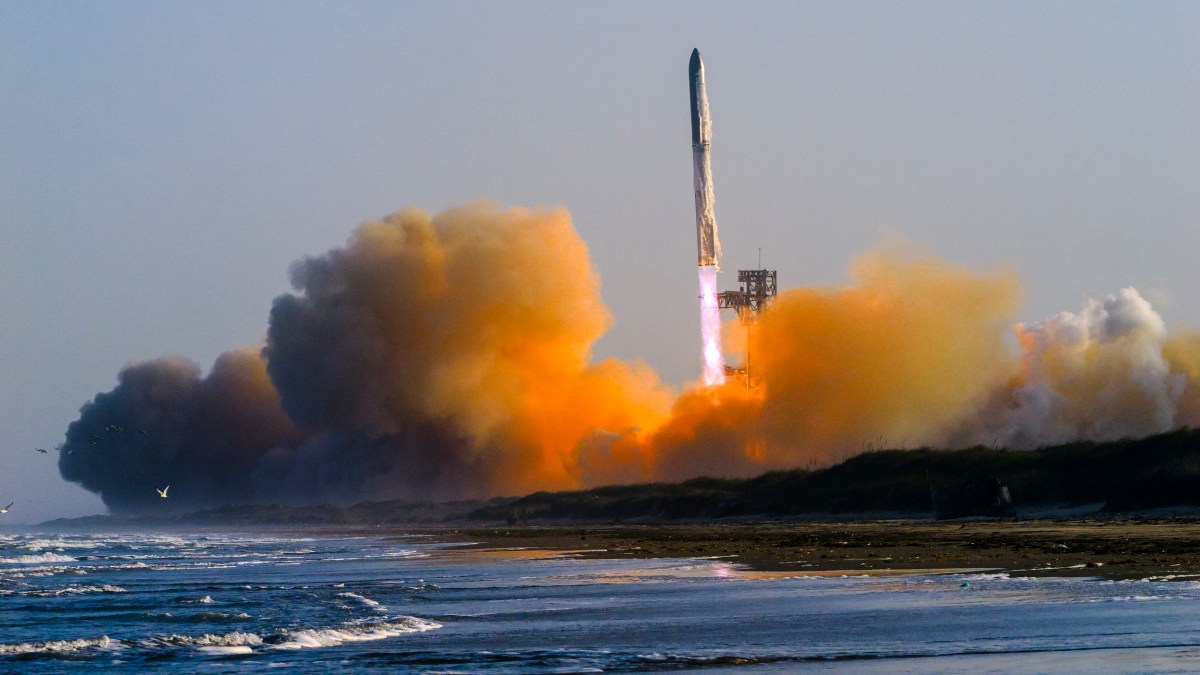SpaceX’s Starship Rocket Explodes During Texas Test
During a recent rocket test in the southern region of Texas, a significant segment of a SpaceX spacecraft experienced a massive explosion on the test platform, resulting in a colossal fireball soaring into the night sky. This incident marks the fourth successive mishap faced by the innovative Starship rocket, a project conceived and driven by SpaceX’s founder, Elon Musk, to pave the way for human settlements on Mars.
Details from SpaceX regarding the incident indicate that Starship went through a ‘substantial anomaly’ around 11 p.m. local time on their designated test stand. The check and tune-up were aimed at preparing the spacecraft for an upcoming flight test at Starbase, a quaint town serving as the operational hub for all activities at Texas’ southern end.
In a public statement, SpaceX assured that throughout the incident, stringent safety protocols were enforced around the site. Furthermore, it confirmed that all staff members were safely evacuated and accounted for, thereby minimizing human casualties and ensuring staff safety.
The company also emphasized that despite previous launch failures resulting in rocket debris and fuel scattering over nearby land areas, this incident presented no threats or hazards to adjacent communities. The explosive event occurred as rocket engine assessments were underway on the ground instead of staging full-scale launches.
A similar event took place in May when a Starship prototype did not withstand tests and disintegrated over the Indian Ocean. Since 2023, the giant rocket had been launched nine times and, out of those, five launches did not succeed as anticipated. However, it’s important to note that the most recent episode was not part of a launch sequence but occurred during a ground test.
Notwithstanding these mishaps, these rockets’ ability to be reused has revolutionized fiscal allocations towards space launches. Recyclability has considerably curtailed expenses associated with launching into space, thus sparking new commercial ventures related to space technology and exploration.
Cost-effective launch solutions play an essential role in the feasibility of ambitious endeavours like the colonization of Mars, which requires recurrent and reasonably priced cargo and passenger trips. Affordable space travel implies more accessibility, paving the way for human habitation outside our home planet.
This perspective on SpaceX’s continual setbacks was low-lighted by Dr Jason Held, Chief Executive Officer at Saber Astronautics based in Adelaide. He stated that it’s quite common to encounter failures in trial runs such as this one.
Further amplifying his viewpoint, Dr. Held noted that while the approach of SpaceX to onboard failures as part of the learning process might paint a risky picture, it’s more desirable than other space programs’ exorbitant, long-term, and overly cautious methodologies. In his view, the risks associated with these other programs are simply not often exposed, and hence are unknown.
While SpaceX’s approach appears fraught with uncertainties, the so-called risky method offers a fast-paced learning curve that might fast-track success. SpaceX’s high failure tolerance could ultimately win out in the long run, making space more accessible and affordable for humanity.
The testing site for these rockets is based in a town formerly known as Boca Chica Village, situated at Texas’ southern edge. The town, now officially known as Starbase, saw its name change approved by community members in 2025. Its role in space-inspired narratives continues to flourish as the site of SpaceX’s spacecraft testing.
Notably, each failure SpaceX experiences is met with renewed focus and effort toward achieving the shared vision of human life on Mars. These setbacks are dealt with stoically, seen as stepping stones rather than roadblocks along the pathway to success.
In the domain of space exploration, failure is not only inevitable but required. Every failure is another step forward, an opportunity to learn, evolve, and grow. As pioneers in space exploration, SpaceX believes that each failure is merely a catalyst, speeding up mankind’s journey to the stars.


